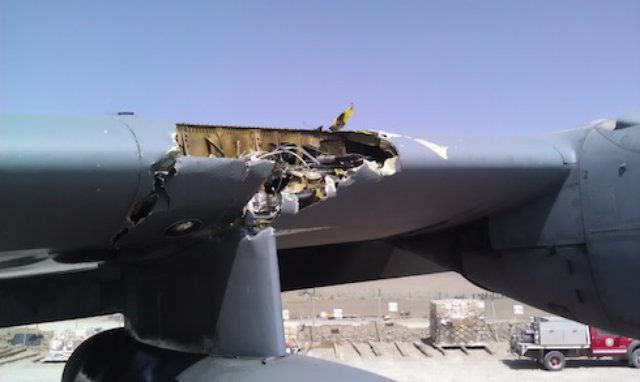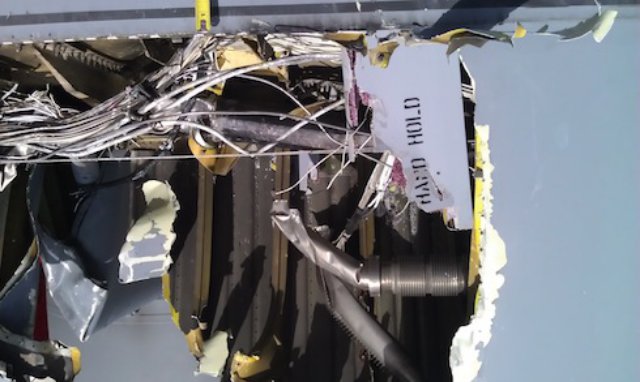Amateur Drones - Safety Discussion
#13
Sometime in the mid 90s, AOPA magazine had a photo of a Cessna that had been struck by an RC Piper Cub. The model penetrated the Cessna's skin behind the pilot's door and the tail was still sticking out after landing.
#14
#17
Drone came within 200 feet of airliner over New York - CNN.com
Tue March 5, 2013
(CNN) -- An unmanned drone came within 200 feet of a commercial jet over New York, triggering an FBI appeal to the public for any information about the unusual and potentially dangerous incident.
The FBI expanded on the FAA report, saying in a statement that the Alitalia flight from Rome was roughly three miles from runway 31R when the incident occurred at an altitude of approximately 1,750 feet.
The unmanned aircraft, described by the FBI as black and no more than three feet wide with four propellers, came within 200 feet of the Boeing jetliner.
The FBI said it was looking to identify and locate the aircraft and its operator. A source with knowledge of the incident says investigators interviewed the pilot and others on the Alitalia plane.
For recreational hobbyists, flying remote-controlled planes is only allowed by the FAA up to 400 feet, and within sight of the operator. If they are going to fly within three miles of an airport, they have to let air traffic controllers know.
Flying unmanned aerial vehicles is illegal for most business purposes; however, governments and public entities such as police departments can apply for permission to operate them.
The FAA has been working to setup new rules and to safely integrate the use of unmanned aircraft into the national air space, and last year opened an "unmanned aircraft systems integration" office.
(End)
#18
Gets Weekends Off
Joined APC: Nov 2012
Position: 737 FO
Posts: 880
They should really expedite the integration before something terrible happens. What would happen if a drone hit a foreign aircraft on US Soil and it was a government drone? Not good.
#19
#20
The integration is going to involve an exemption for see-and-avoid. There is no suitable technical alternative at this time. There are two possible approaches to see-and-avoid substitute for UAVs...
First off ADS-B and Next-Gen will not solve see-and-avoid for UAVs. They were not designed for that.
1) Enhanced TCAS, possibly based on ADS-B. ADS-B would probably have to be modified to accommodate this. Anyone who has used TCAS knows that it's far from reliable...sometimes it just doesn't "see" other aircraft, probably due to antenna placement. This is OK, since TCAS is a backup to see-and-avoid and ATC separation...but it's not good enough to be a primary defense. A reliable TCAS-like solution would be expensive and would require retrofit on at least 121/135 aircraft and maybe all aircraft. The alphabet groups will not be happy about subsidizing a massive ATC system upgrade just for the convenience of UAV proponents, and presumably they'll prevail.
2) Self-contained sensors within the UAV to give see-and-avoid equivalent capability against any aircraft, even one without a transponder. This probably makes the most sense but would require multiple, expensive (and heavy) sensors on each UAV, probably a combination of electro-optic and radar, capable of scanning large sectors. The UAV crowd will probably fight having to implement a robust solution since if you start piling on a lot of weight it starts to defeat the point of unmanned.
3) Leverage materials and electronics advances to miniaturize and soften UAVs to the point where they can't really hurt a manned airplane (ie nerf-drone). This might eventually work for many, but not all applications.
My guess...rather than requiring #2 up front, the FAA (under congressional pressure) will grant waivers and relaxations to see-and-avoid for UAVs. As they proliferate, they'll take out a few manned airplanes, including perhaps an airliner. The resulting backlash will ground or severely restrict the UAV fleet for several years while they implement #2.
Thread
Thread Starter
Forum
Replies
Last Post
AUS_ATC
Hangar Talk
0
03-08-2006 07:56 PM








